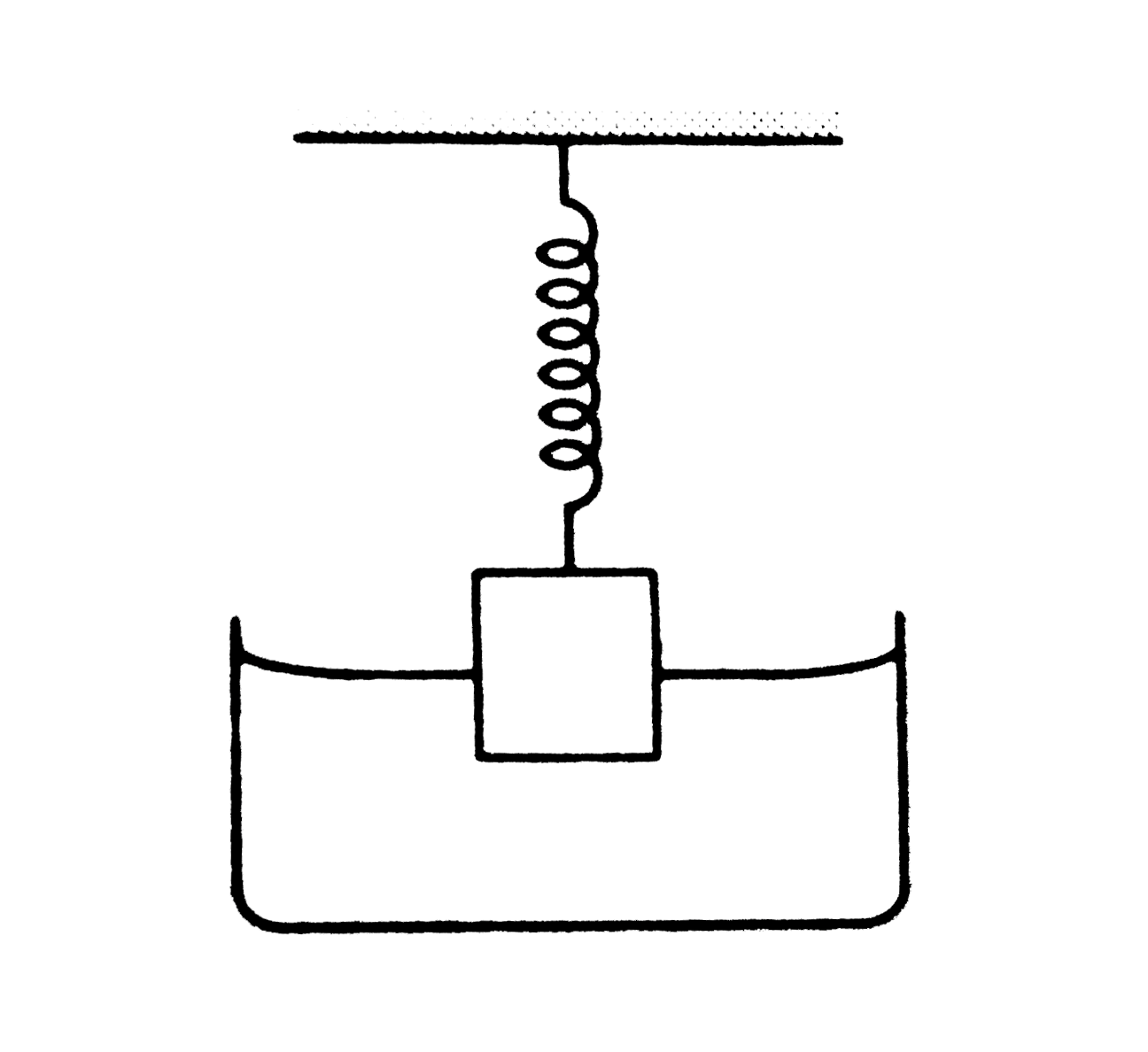Exercises from HC VERMA PHYSICS (ENGLISH) FLUID MECHANICS for Class 11
| Class 11 | PHYSICS |
| Chapter | FLUID MECHANICS |
| HC VERMA PHYSICS (ENGLISH) | Exercises |
| Medium | English |
| Academic Year | 2023-2024 |
Question 4
A glass full of water has a bottom of area 20cm2, top of area 20cm, height 20cm and volume half a litre.

a. Find the force exerted by the water on the bottom.
b. Considering the equilibrium of the v, after. find the resultant force exerted by the side, of the glass on the water. Atmospheric pressure =1.0×105N/m2. Density of water =1000kg/m−3 and g=10m/s2View SolutionQuestion 5
Suppose the glass of the previous problem is covered by a jar and air inside the jar is completely pumped out a. What will be the answer to the problem? b.Show that the answers do not change if a glass of different shape is used provided the height, the bottom area and the volume are unchanged.View SolutionQuestion 8
Water is filled in a rectangular tank of size 3m×2m×1m. a) Find the total force exerted by the water on the bottom surface of the tank. b) Consider a vertical side of area 2m×1m. Take a horizontal strip of wide δx metre in this side, situated at a depth of x metre from the surface of water.Find the force by the water on this strip. c) Find the torque of the force calculate in part b) about the bottom edge of this side. d) Find the total force by the water on this side. e) Find the total torque by the water on the side about the bottom edge. neglect the atmospheric pressure and take =10ms−2.View SolutionQuestion 11
A metal piece of mass 160 g lies in equilibrium inside a glass of water as shown in figure. The piece touches the bottom of the glass at a small number of points. If the density of the metal is 8000kgm−3, find the normal fore exerted by the bottom of the glass on the metal piece.
 View Solution
View SolutionQuestion 12
A ferry boat has internal volume 1m3 and weight 50 kg. a. Neglecting the thickness of the wood, find the fraction of the volume of the boat immersed in water. b. If a leak develops in the bottom and water starts coming in, what fraction of the boat's volume will be filled with water before water starts coming in from the sides?View SolutionQuestion 23
A cylindrical object of outer diameter 10 cm, height 20 cm and density 8000 kgm−3 is supported by a vertical spring and is half dipped in water as shown in figure. a. Find the elongation of the spring in equilibrium condition. b. If the object is slightly depressed and released, find the time period of resulting oscillations of the object. The spring constant =500Nm−1.
 View Solution
View SolutionQuestion 24
A wooden block of mass 0.5 kg and density 800 kgm−3 is fastened to the free end of a vertical spring of spring constant 50 Nm−1 fixed at the bottom. If the entire system is completely immersed in water, find a. the elongation (or compression) of the spring in equilibrium and b. the time period of vertical oscillations of the block when it is slightly depressed and released.View SolutionQuestion 27
At Deoprayag (Garhwal, UP) river Alaknanda mixes with the river Bhagirathi and becomes river Ganga. Suppose Alaknanda has a width of 12 m, Bhagirathi has a width of 8m and Ganga has a width of 16m. Assume that the depth of water is same in the three rivers. Let the average speed of water in Alaknanda be 20kmh−1 and in Bhagirathi be 16kmh−1. Find the average speed of water in the river Ganga.View SolutionQuestion 28
Water flows through a horizontal tube of variable cross-section. The area of cross section at A and B are 4mm2and2mm2 respectively. If 1 cc of water enters per seconds through. A find a. The speed of water at A, b. the speed of river at B and c. the pressure difference PA−PB.
 View Solution
View SolutionQuestion 34
Water leaks out from an open tank through a hole of area 2mm2 in the bottom. Suppose water is filled up to a height of 80 cm and the area of cross section of the tankis 0.4m2. The pressure at the open surface and the hole are equal to the atmospheric pressure. Neglect the small velocity of the water near the open surface in the tank. a. Find the initial speed of water coming out of the hole. b. Findteh speed of water coming out when half of water has leaked out. c. Find the volume of water leaked out during a time interval dt after the height remained is h. Thus find the decrease in height dh in term of h and dt.
d. From the result of part c. find the time required for half of the water to leak out.View SolutionQuestion 35
Water level is maintained ina cylindrical vessel up to a fixed height H. The vessel is kept on a horizontal plane. At what height above the bottom should a hole be made in the vessel so that the water stream coming out of the hole strikes the horizontal plane at the greatest distance from the vessel.
 View Solution
View Solution





